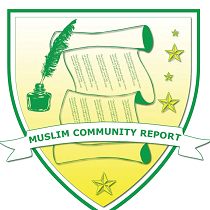President of Namibia laments as he tackles poverty in the country
Recently, President Hage Geingob lamented that despite the progress made in the country, the stagnant poverty level still remains a major national challenge.
Geingob said this at the official launch of the fifth National Development Plan (NDP5) at State House, adding that development was defined by the economic, political and social well-being of citizens. He further said that he is ready to focus on the poverty level of his citizen so as to record an overall development.
“The problem of poverty continues to be a challenge. We have sought to provide relief in crises, but we need to find a durable solution that helps everyone achieve the kind of lives they have reason to value,” he said, adding that poverty eradication remained the focus of his administration.
In addition, the president confirmed that Namibia was considered an upper middle income country by multilateral financial institutions, despite the fact that “the top 1% have the same amount of income as the bottom 50%”.
Geingob said NDP5 would bring the country closer to realising its Vision 2030 objectives, and emphasised that the Harambee Prosperity Plan would fast-track some interventions, and not replace Vision 2030.
The president stated that, Namibia’s population is expected to have increased to 3,5 million by 2030, and being overwhelmingly youthful.
“Young men and women of tomorrow could propel Namibian society towards Vision 2030,” he said.
The President added that the country needed to prepare for this demographic change in order to give “an early start to toddlers today. Namibia will aggressively invest in early childhood development during NDP5”. He believed it is a strategy to eradicate poverty from the scratch.
The government has also invested in modernising and scaling up various sectors, including agriculture, manufacturing, fisheries, mining and tourism, which will as a result create more jobs for the unemployed and directly making life better for them.
Geingob said there are issues in the hospitals, schools, housing and human resources. These issues he said are the major challenges affecting the country’s growth and development.
“Informal settlements in towns and cities pose challenges to the administration of these cities and towns,” he added.
During the official launch of the fifth National Development Plan (NDP5), a presentation by Sylvestor Mbangu, government’s chief national development adviser, showed that NDP5 has four pillars, namely: economic progression, social transformation, environmental sustainability and good governance.
In addition, he explained that the NDP5’s goals included achieving inclusive, sustainable and equitable growth, building capable healthy human resources, ensuring a sustainable environment, and promoting good governance through effective institutions. The achievement of these goals will help to reduce the level of poverty in the country.
The president also added by saying that the economic progression pillar aims to ensure higher income growth and improved income distribution for Namibia’s citizens and reduce unemployment, while the social transformation pillar will look at improving housing provision to enable low cost housing for the poor.
However, Economic planning minister Tom Alweendo said Namibia has recorded increment in the level of development compared to the past years. He further stated that the issue of poverty will take a new turn as the year goes by.

